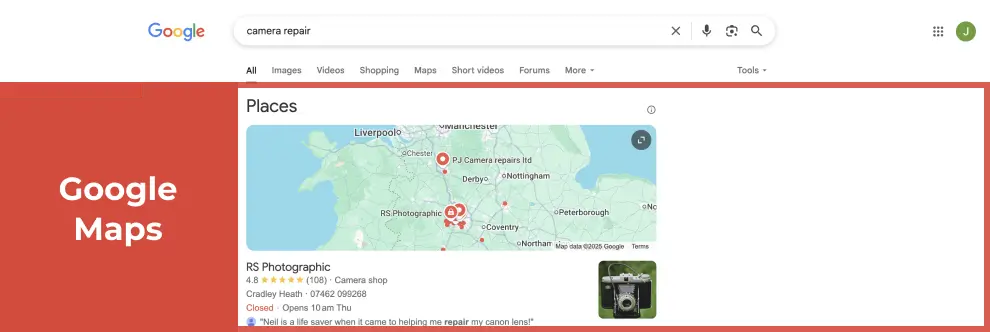Google search results pages continue to evolve. Looking at a search results page today will often look different to a year ago, five years ago and a decade ago. Typically these changes, especially when the search is transactional (someone looking to buy something) have often favoured Google Ads results where businesses pay to see their site placed highly in a text ad or a shopping ad.
The recently introduced AI Overview, where Google uses their Gemini AI to provide an answer at the very top of the search results page now appears in many searches. Recent data suggests that AI in Search is having a drastic impact on question or informational searches which were once more organic results, without paid ads bearing down on them. It’s likely that these AI Overview’s could be impacting businesses more than users switching to ChatGPT for their research, as the AI Overview doesn’t link through to your website.
Here is a quick rundown of some of the elements on a Google results page:

Organic results
These are the non-paid listings and are based on Google’s algorithm assessing the relevance and authority of your webpage. This is where a blog / news / article strategy can help your business giving you the opportunity to provide highly relevant information to your target audience like these from some of our clients: planning permission considerations, wedding trends and the difference between indemnity and liability.

Paid text ads
Displayed at the top or bottom of the results page, these ads are marked as “Sponsored” and are typically used for transactional searches to promote products or services and are often a quick way to traffic and leads. Often starting small, establishing a working metric for cost per sale or cost per lead allows you to scale up once you’ve proven the channel.

Paid shopping ads
These visual ads showcase your ecommerce products with images and importantly price. These can be a great way to show your catalogue and pre-qualify some of the traffic reaching the site by showing both the goods and the price of the goods before someone clicks.

AI Overview
A relatively new feature (one year ago) that provides an AI-generated summary directly in the results. It’s hard to measure the impact by being in these results as it doesn’t guarantee a click and users may just read the information and be satisfied by the answer.

Google Maps
For businesses with a physical presence and serving customers at their location, a Google Maps listing can help you with local traffic displaying images, location, opening hours and reviews in the results page.

Overall, to succeed you will need a broad search strategy and not to rely on any one type of search result, especially as the ground is constantly changing. If you’d like to discuss any of the above, get in touch.



